In this post, we will view CAMMP™ by the numbers and images
First, CAMMP™ can be called a stage-gate process and the full name is The Customizable and Adaptable Methodology for Managing Projects™.
Three Dimensions (3)
CAMMP™ is a three-dimensional methodological approach for managing projects. The three dimensions are:
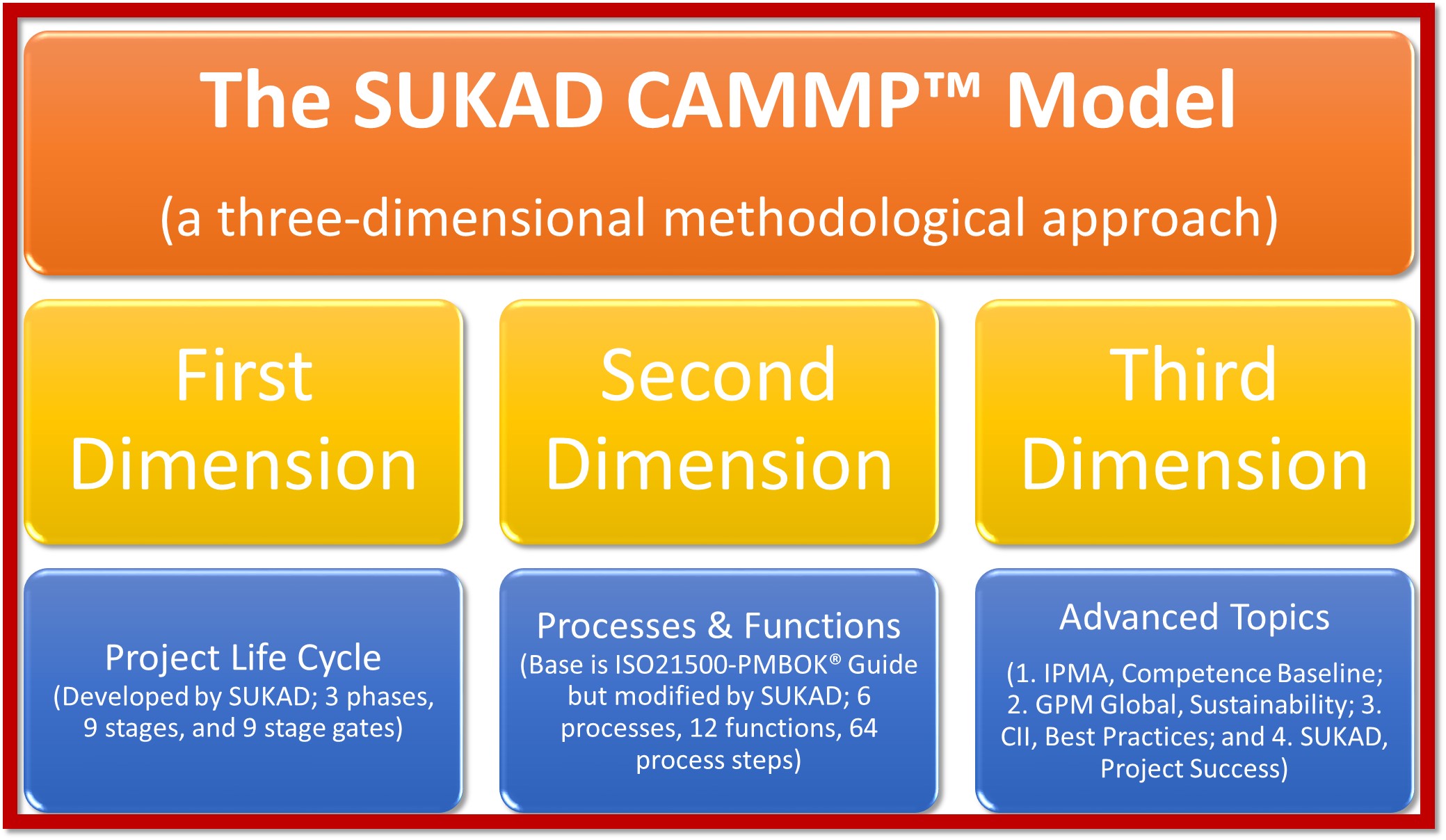
Three Phases (3)
The CAMMP™ standard model consists of three phases. These are:
 These phases could be applicable to any project, in any industry, and in any organization. The names could be different but the general purpose of each phase applies everywhere.
These phases could be applicable to any project, in any industry, and in any organization. The names could be different but the general purpose of each phase applies everywhere.
Nine Stages and Stage Gates (9 & 9)
Since a project life cycle is not fixed across domains and types of projects, we have subdivided each of the phases into two or more stages. Each stage has a stage deliverable (not in the image) and the deliverable must go through a stage gate. See full model next:
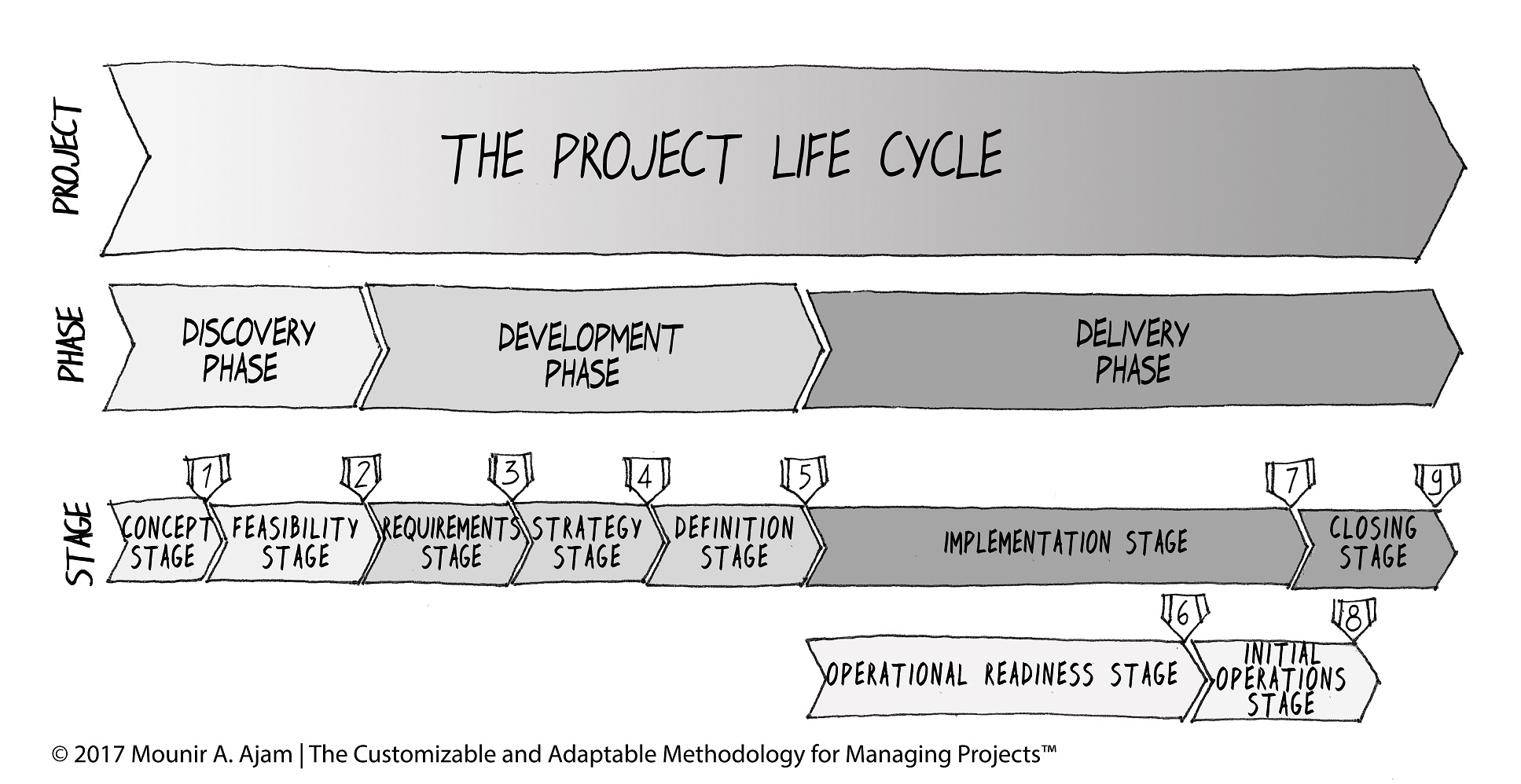
We must remind everyone that the concept of one-size-fits-all DOES NOT WORK in project management and a methodology has to be custom-fit to organizational needs and types of projects.
For example, the next image shows a project life cycle integrating agile development concepts.

and the next image shows the project life cycle for large and complex projects
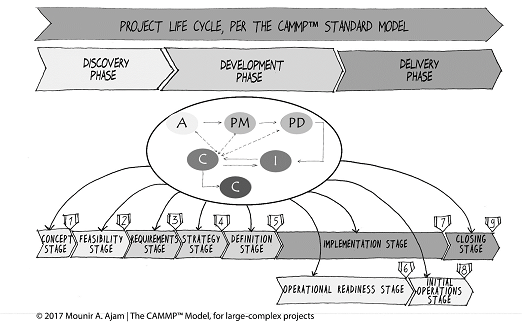
Six Processes (6)
The first dimension is a project life cycle model and would be similar to the images shown already. The last image shows six small ovals in a larger oval. These are the elements of the second dimension, the CAMMP™ Six Processes, which are modified from ISO 21500 and PMBOK(r) Guide. The next image shows these processes with the full name.
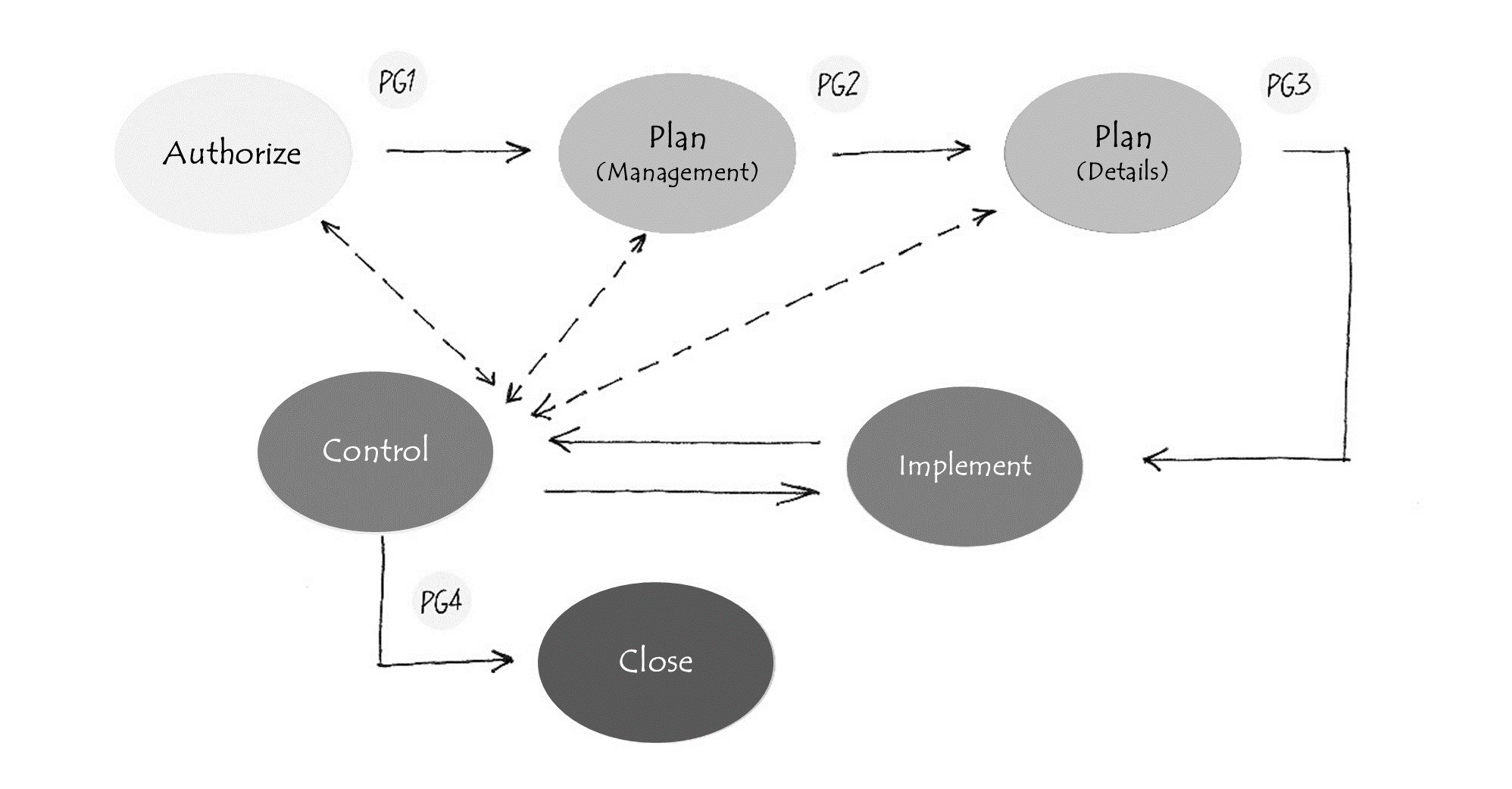
Sixty Four Process Steps (64)
Each of these processes consists of many process steps. In total, there are 64 steps here. For a full list, see the next image (table).
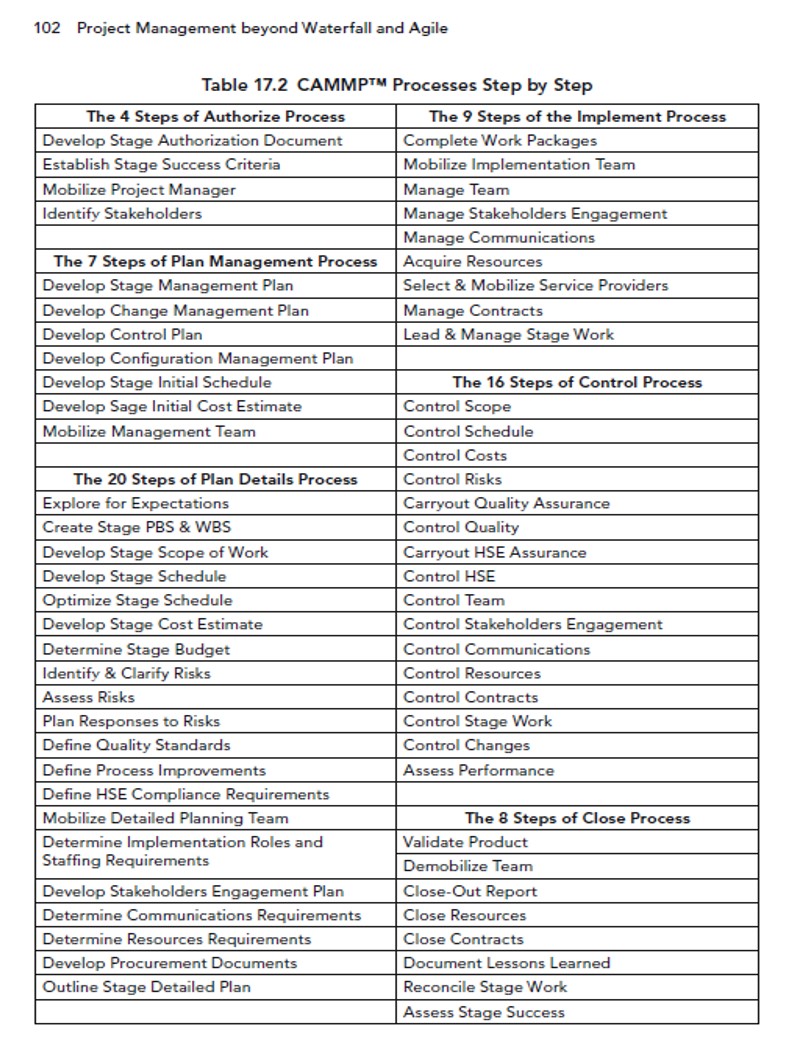
Four Dimensions or Project Success (4)
How to measure success when organizations follow the CAMMPTM Model? Using four dimensions that are spread across the project life cycle and each one of them could have a few key performance indicators (KPI). Each of these success dimensions has a different purpose and should be assessed at different intervals.
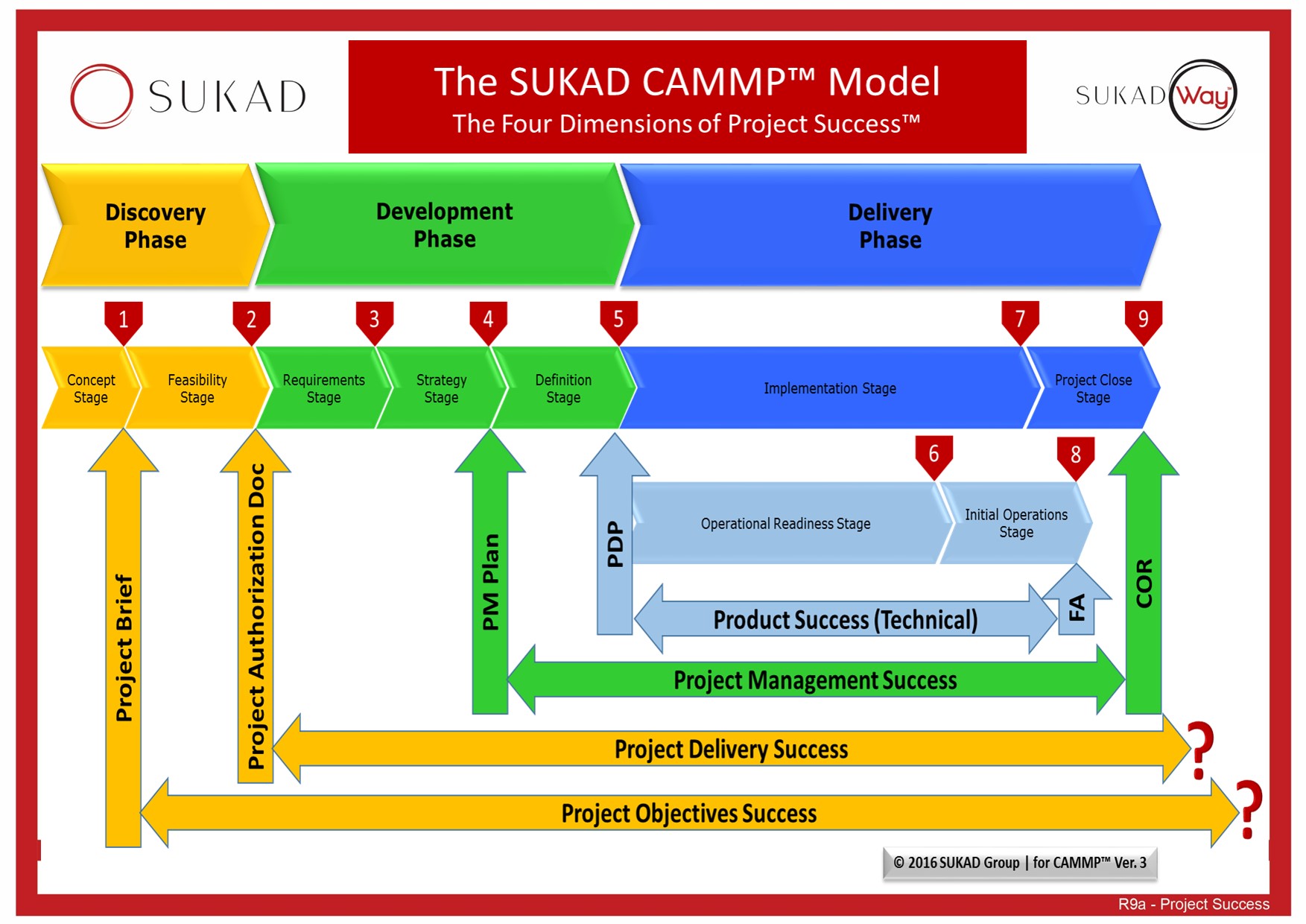
Notice that in the previous image, two of those dimensions cannot be assessed until post project completion.
Eleven Principles (11)
Finally, we present the CAMMPTM Principles or Critical Success Factors.
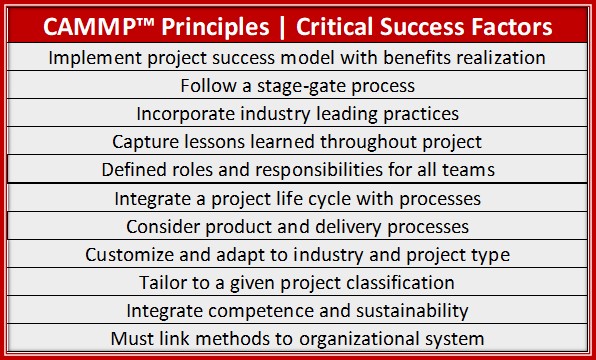
Closing Comments
There are other items that we could have added here, but what we presented is a summary of the fundamental concepts.
If you like to learn how the CAMMPTM Model compares to other guides and standards, please click here.
What do you think?
Would you use this approach?
How about using an online application based on CAMMP™, The Customizable and Adaptable Methodology for Managing Projects™?

Trackbacks/Pingbacks